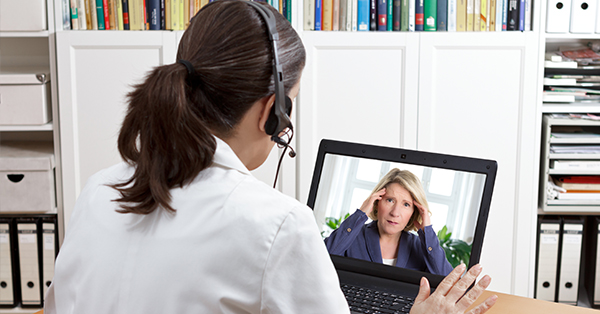– The best resource for monthly healthcare regulatory compliance updates. Compliance Updates: April 2024 Overlook: Licensure Compacts Other Legislation Board Updates Interstate Medical...


The Coronavirus (COVID-19) pandemic brings into consideration the need for expanded telehealth options across our country. Telehealth offers greater access to health care to those in rural areas and to the elderly, speeds diagnosis and treatment, and limits the risks of person-to-person spread of illnesses and disease. In light of COVID-19, telehealth can be used for initial screenings outside of hospitals and clinics to reduce the chances of spreading the virus further.
What is Telehealth?
According to the Health Resources Services Administration, telehealth is the use of electronic information and telecommunications technologies to support long-distance clinical health care, patient and professional health-related education, public health, and health administration. Telehealth technologies include videoconferencing, streaming media, wireless communications, store-and-forward imaging, and more.
Telemedicine can be useful in evaluating and reassuring patients who are isolated and can be used to help patients decide who needs to be seen in the hospital, seen in an alternative setting like an urgent care, or who can receive diagnosis and treatment in their home.
In a Q&A with mHealthIntelligence regarding the Coronavirus, Peter Antall, MD, President and Chief Medical Officer for American Well said the following about the benefits of telehealth, “Those with milder symptoms can be treated and monitored at home so as to limit the spread of this disease and not overwhelm our healthcare facilities. In this respect, telehealth is an ideal venue for an outbreak like this. We can increase access to care. This helps with infection prevention and control and also allows patients to receive care in the home without exposing themselves to further illness.”
The Coronavirus Emergency Response Bill
On March 04, 2020, Congressional leaders agreed to a coronavirus response bill that will allow Medicare reimbursement for care providers using telehealth to treat seniors at home.
The emergency spending deal, announced this week and pending a vote in both the House and Senate, will waive Medicare’s geographical restrictions on telehealth during the current COVID-19 public health emergency, enabling providers to use telehealth in urban and rural areas as well as in the patient’s home – all defined within the scope of an “emergency area”. This bill also loosens restrictions on the use of a telephone to deliver care, as long as that phone has audio-visual capabilities.
House Speaker Nancy Pelosi said in a statement regarding the Coronavirus Emergency Response Bill, “To protect public health, the bill will allow Medicare providers to extend telemedicine services to seniors regardless of where they live, at an estimated cost of $500 million.”
According to Politico, the spending bill allocates about $6.5 billion to the US Department of Health and Human Services, including $2.2 billion for the Centers for Disease Control and Prevention to address state and local preparedness. Some of that money will likely be used by healthcare providers to extend telehealth and mHealth platforms to reduce crowding in hospitals, treat isolated patients, and facilitate remote patient monitoring programs.
Greater Access to Telehealth Can Improve the Quality of Health Care for All Patients
The current global Coronavirus pandemic is a poignant example of the need for greater telehealth options across our country, to serve patients in ways that give them better access to health care. Utilizing telehealth can limit the spread of illness and disease and patients who have health care needs unrelated to the Coronavirus can be served in the security of their homes thus eliminating unnecessary exposure to the virus.
Verisys partners with telehealth companies to screen and credential their health care providers ensuring the quality and efficacy of those treating patients remotely. It is especially important to screen and monitor providers who take part in telehealth care as they may be treating patients across multiple state lines. Having all providers properly screened and implementing ongoing monitoring of this population is a best practice for telehealth companies to ensure patient safety and to provide the highest level of remote care.
 |
Written by Juliette Willard Healthcare Communications Specialist Being creative is my passion! Writer. Painter. Problem Solver. Optimist. Connect with Juliette on LinkedIn |